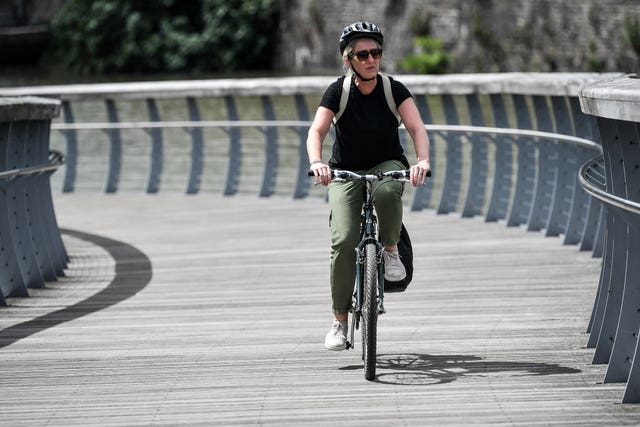Government plans to cut greenhouse gas emissions by 78% by 2035 to tackle climate change would transform our homes, commutes and even diets.
According to advice from the Government’s advisory Climate Change Committee, delivering on the target will mean changes including an end to heating homes with natural gas boilers, lower meat and dairy diets and a switch to electric cars.
Cuts to emissions from buildings, which account for 17% of the UK’s climate pollution, are a priority, and the first goal will be to reduce the amount of energy that is wasted in heating.
That means millions of rented, owned and council flats and houses will need to be made more energy efficient, with measures including insulation and double or triple glazing that make them cosier to live in.

We will not be heating our homes with natural gas or oil boilers in the coming decades, with the Climate Change Committee calling for an end to sales of new gas boilers by 2033 for most buildings.
The majority of homes are likely to switch to heat pumps, which are powered by electricity.
Air source heat pumps look like an air conditioning unit on the outside of buildings and work a bit like a fridge in reverse to generate heat from the outside air to provide heating and hot water in the home. There are also heat pumps that use the ground or water to generate heat.
Some houses in certain areas may switch to hydrogen boilers or may be hooked up to district heating systems, while the shift from gas will also mean a switch to cooking on electric induction hobs.
The sounds – and smells – on our streets will also change, as part of efforts to tackle transport emissions, which are the biggest source of pollution in the UK, contributing 30% of carbon emissions, mostly from road transport.
The sale of new petrol and diesel cars, motorbikes and vans, including plug-in hybrids, will have to be phased out by the early 2030s, and even HGVs will start to shift to greener alternatives.

That will mean more electric vehicles and charging points, and people will also need to use their cars less, with more home working and more journeys on foot, bike or public transport – with buses and trains also going green.
Growth in demand for flights will have to slow, and flying may become more expensive to reduce demand – particularly for people who fly often who may face a frequent flyer levy.
The Climate Change Committee also says people should be encouraged to cut the amount of meat and dairy they eat, with recommendations for a 20% shift away from those products by 2030, and to waste less food.
The committee has said an accelerated shift in diets away from meat and dairy is particularly important, but can happen over time and be positive for health.
But the Government, which says it is not following all the specific recommendations from the committee on meeting the 78% cut target, has said it will maintain people’s freedom of choice in their diet.
Reducing meat and dairy consumption will cut emissions from agriculture and release land to plant trees to help absorb carbon dioxide, according to the committee.
That could mean a change in the way the countryside looks, with recommendations from the advisers to create more than a million acres of new mixed woodland by 2035, along with more carbon-friendly farming, bioenergy crops, bigger hedgerows and restored peatland areas.




Comments: Our rules
We want our comments to be a lively and valuable part of our community - a place where readers can debate and engage with the most important local issues. The ability to comment on our stories is a privilege, not a right, however, and that privilege may be withdrawn if it is abused or misused.
Please report any comments that break our rules.
Read the rules hereLast Updated:
Report this comment Cancel